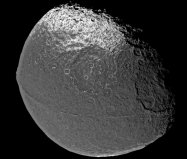|
Thorsten Becker
The University of Texas at Austin Teaching: Topics in Geodynamics |

|
[news] [research] [team] [publications] [CV] [downloads] [contact]
teaching: UT GEOL: [GP 354], [LP 315] [TG 371], other classes
[CIDER] [C] [UNIX/GMT] [SEATREE] [visuals]
Topics in Geodynamics (540/790)Applications of continuum physics to geological problems; fundamental physical processes necessary for an understanding of plate tectonics; quantitative analyses of geological problems stressed. Reading and problems for self-study with focus on planetary applications. Structure
SyllabusThe course is based on self-study of the textbook, additional reading, and working on problem sets.ReadingAll of chapters 1 through 7 of the Geodynamics textbook, and additional material from other sources (see below). Textbook exceptions: 2.8, 3.18, 4.19-4.21, 4.27, 4.30, 6.12, 6.13, 6.17. The focus is on chapters 4, 5, and 6.Problem sets and additional readingThe following numbers refer to problem sets in text, not to reading sections as above. W1, W2 means the weeks in which the problems are to be completed.
Updated: December 05, 2025 (c) Thorsten Becker, 1997-2025. |